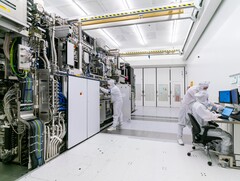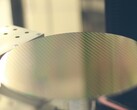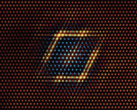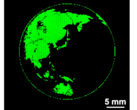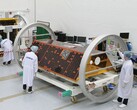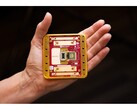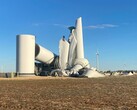Scientists at the Chinese Academy of Sciences (CAS) have achieved a significant breakthrough in developing a solid-state deep ultraviolet (DUV) laser that generates a coherent 193 nm beam—exactly the wavelength needed in cutting-edge semiconductor manufacturing.
This experimental solid-state laser, described in a paper published by the International Society for Optics and Photonics (SPIE), represents a potential alternative to the gas-based excimer lasers currently used in photolithography gear from companies like ASML, Canon, and Nikon.
Modern lithography systems rely on that specific 193 nm wavelength to etch super-detailed patterns onto silicon wafers for chip production. Up until now, this was usually done using argon fluoride (ArF) excimer lasers, which use a toxic combination of argon, fluorine, and neon. Because of the toxic materials involved, these systems are complex, expensive, and demand careful handling.
However, the CAS team takes a fully solid-state route, avoiding gas altogether by relying only on crystals and optics. Their system starts with a Yb:YAG crystal amplifier generating an infrared beam at 1030 nm. Then, it splits the beam into two separate paths:
- One path changes the 1030 nm beam into 258 nm via Fourth-Harmonic Generation (FHG), giving an output power of about 1.2 W
- The second path uses an optical parametric amplifier to produce a 1553 nm beam at around 700 mW
These two beams then combine through a series of Lithium Triborate (LBO) crystals to reach the targeted 193 nm wavelength.
This solid-state design offers several potential advantages, including enhanced safety with no toxic chemicals, reduced operational complexity, and lower maintenance requirements than gas-based systems.
Still, significant challenges must be solved before this becomes commercially practical. Their current prototype manages just 70 mW of power at 6 kHz, below the 100-120 W at 8-9 kHz that industrial excimer lasers produce. The CAS laser has a linewidth narrower than 880 MHz, which the team says is on par with the spectral purity of commercial lasers.
Scaling up this technology to match industrial requirements would represent a breakthrough for semiconductor manufacturing equipment. But, considering the experimental nature of this research, we’ll probably have to wait a while before we see any practical implementation of the technology.
Source(s)
InterestingEngineering (in English)




